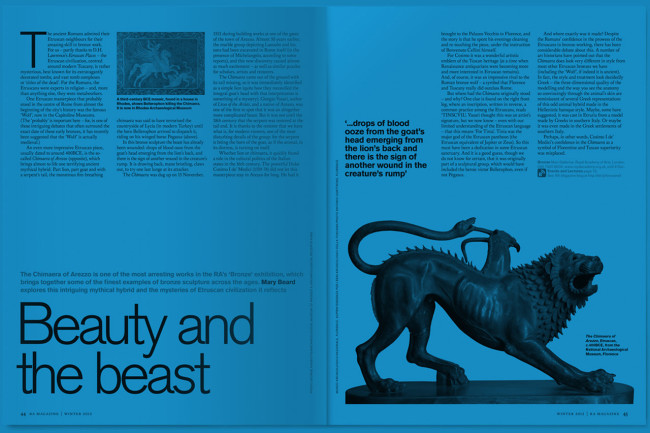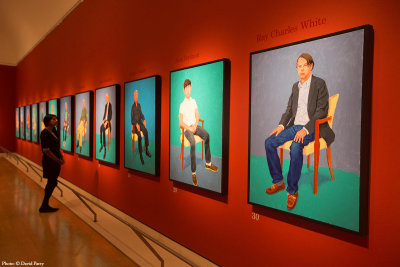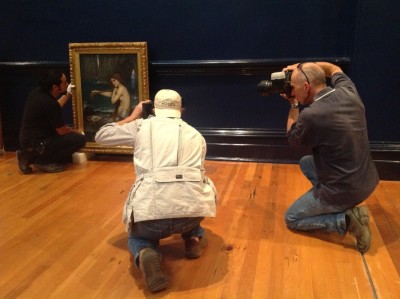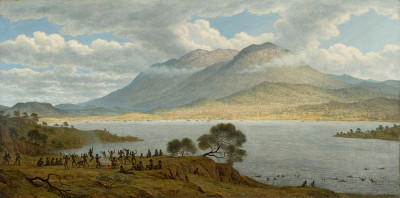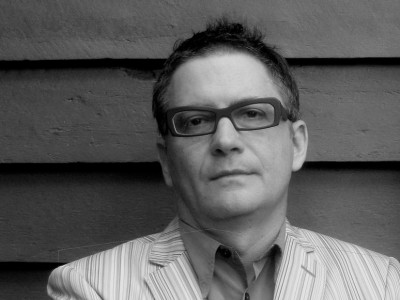Sidney Nolan: “citizen of the planet”
Sidney Nolan: “citizen of the planet”
By Anthony Plant
Published 31 March 2017
A symposium at the RA celebrates the centenary of the birth of Sidney Nolan RA, one of Australia’s greatest painters. But the artist had an international identity, argues Anthony Plant.
-
From the Spring 2017 issue of RA Magazine, issued quarterly to Friends of the RA.
After several failed attempts to leave Australia as a young man (one of which saw him discovered on board ship as a stowaway and returned in disgrace to Melbourne), the artist Sidney Nolan RA became an inveterate traveller from the early 1950s, once he had moved to London. His desire to see the world was insatiable and took him beyond Europe to America, Africa and Antarctica, and into an obsession with China. He painted many spellbinding and evocative series of works inspired by these vast continents.
Throughout his life he described himself as a “citizen of the planet”, not wanting to be tied to any one place. As his finances, fellowships or awards allowed, he revelled in the freedom to travel and engage with people on their own ground. Nolan’s international identity is one of the themes of a forthcoming symposium on the artist at the RA, marking the centenary of his birth.
Nolan referred to himself as being Irish, having traced his family roots to a tiny village near the Burren in County Clare in the 1870s. In 1991 he gifted a series of paintings to the Irish people. They were depictions of the Wild Geese, young Irishmen who had fought the army of William of Orange to a standstill and, to relieve the impasse, were given the option of sailing to France to join the Catholic pretender James Stuart. They were the forerunners of a continuing diaspora that saw Irishmen fighting in the armies of many nations. There is a parallel of sorts in Nolan’s Ned Kelly series, which are based on the stories of Irish bandits being chased by English soldiers across the Australian bush.
-

Sidney Nolan RA, Icebergs (McMurdo Sound, Antarctica), 1964.
Sidney Nolan Trust. Photo courtesy of Agnew's and Bridgeman Images.
-
While much is made of Nolan’s mastery of landscape painting, his focus was not on landscape per se, but landscape as the setting for the evolution of human civilisation and culture, and the constantly changing and mutually moulding relationship between the two. The countries and variety of landscape and peoples that excited him were photographed, sketched and preserved in memories. At Rodd Farm in Powys, he painted largely from memory in a studio in an ancient barn. Natural light was excluded; the studio was illuminated by a powerful mercury vapour lamp that could be raised or lowered to control the brightness because he preferred painting light in the high contrast typical of his native Australia. In spite of these precautions, Nolan admitted that his location would affect his palette, whether in London, the Welsh borders or Antarctica.
His affection for Australia remained strong, and in later years he returned for a few months each year. In a conversation with art critic Elwyn Lynn in 1978, Nolan said: “The Australian sunlight isolates objects, disperses them, and gives them emphasis, but not equal emphasis. It probably isolates them more than any light that I’ve ever seen and that’s a problem that confronts Australian painters, because painting is essentially about the cohesion of forms and objects on a given surface and when light produces completely disparate objects in space you have problems not encountered by painters in the European tradition and light.“ Nolan learnt to capture the peculiar visual effect of the Australian light, and this, together with his striking palette, contributed significantly to his unique artistic voice in Britain and beyond.
Sidney Nolan Centenary Symposium, Royal Academy of Arts, 22 April 2017.
-
-
Enjoyed this article?
Become a Friend to receive RA Magazine
As well as free entry to all of our exhibitions, Friends of the RA enjoy one of Britain’s most respected art magazines, delivered directly to your door. Why not join the club?

-

